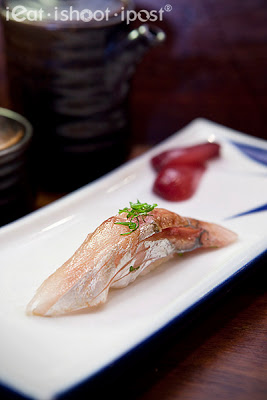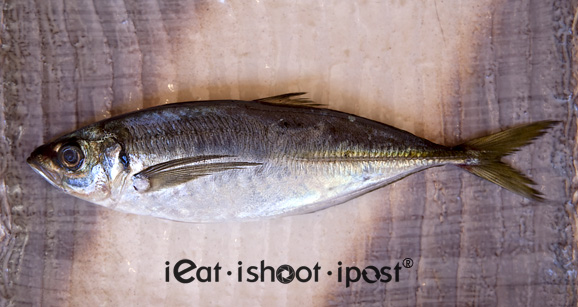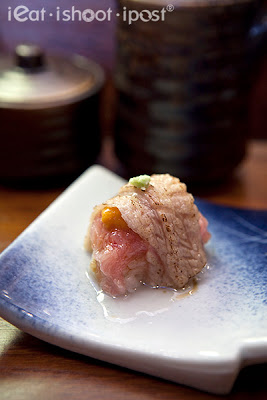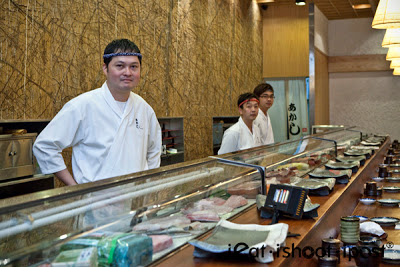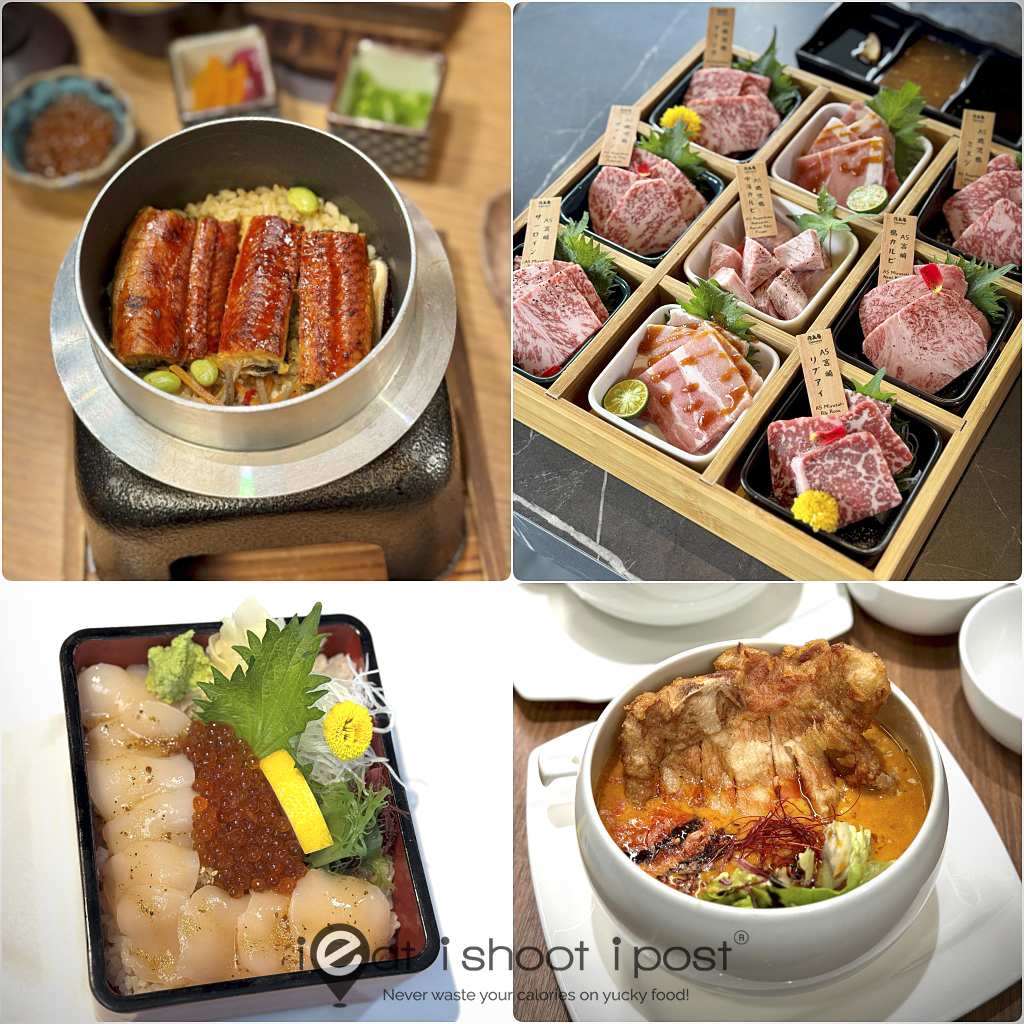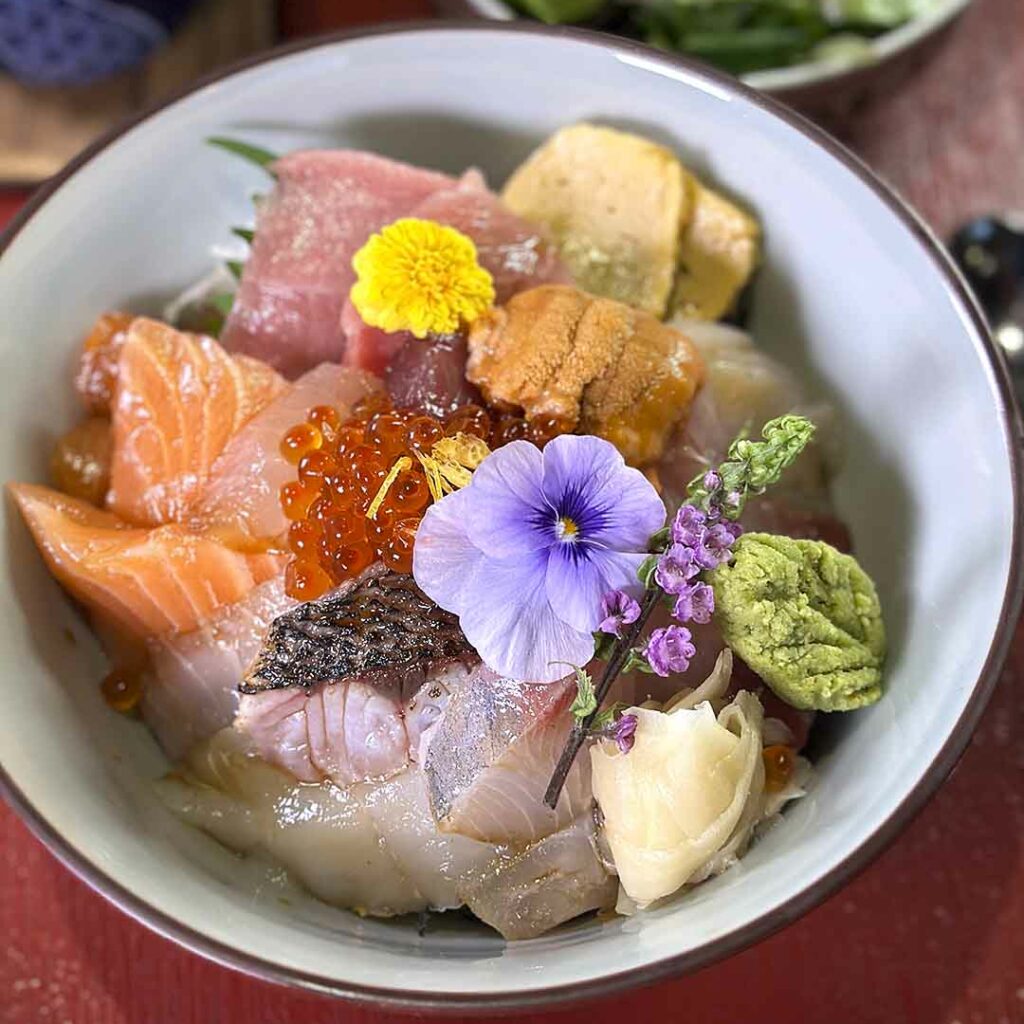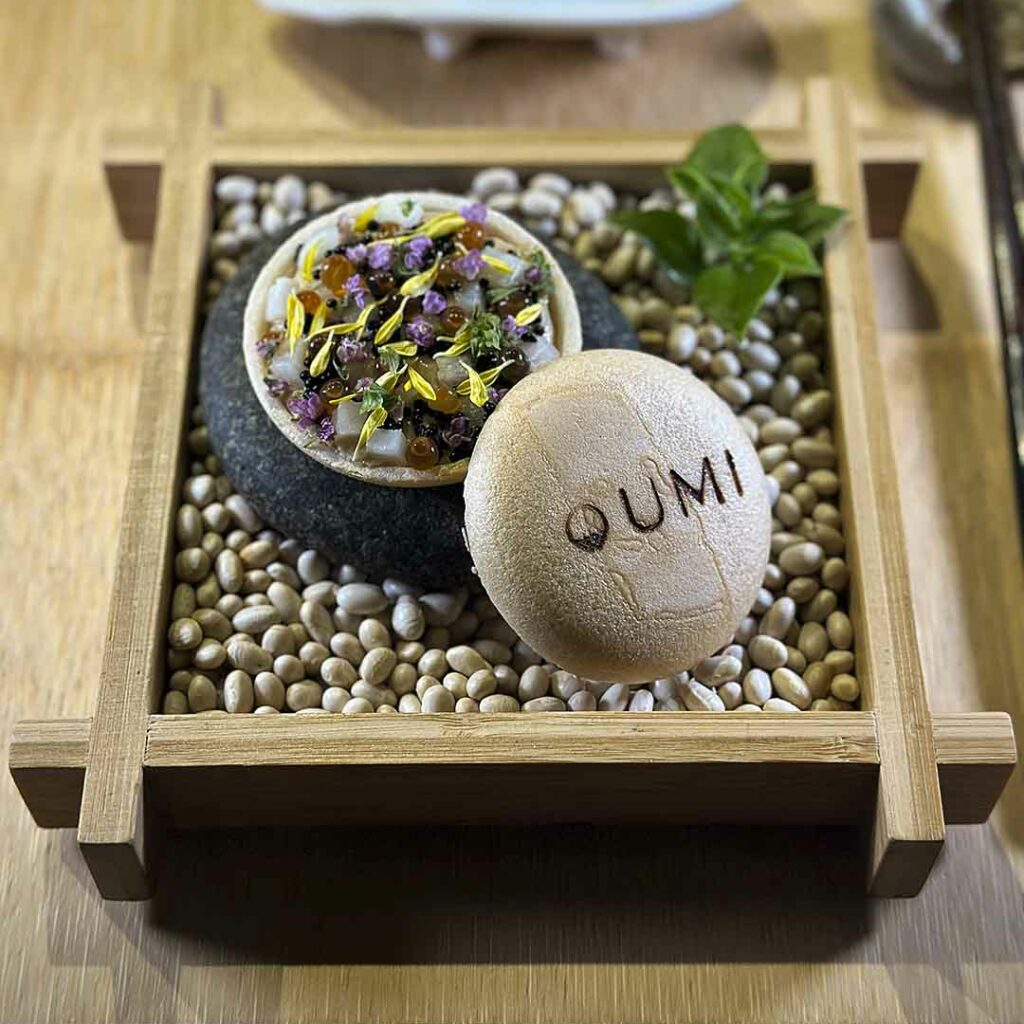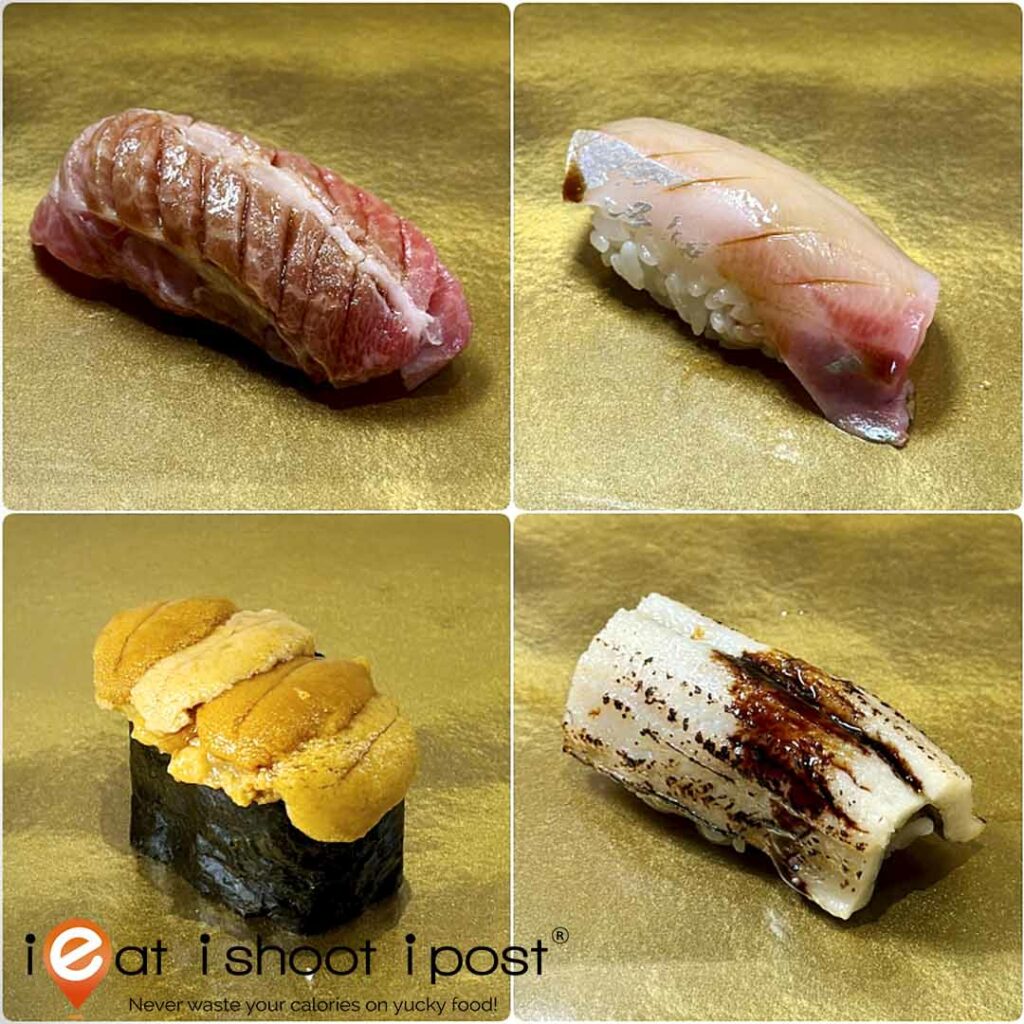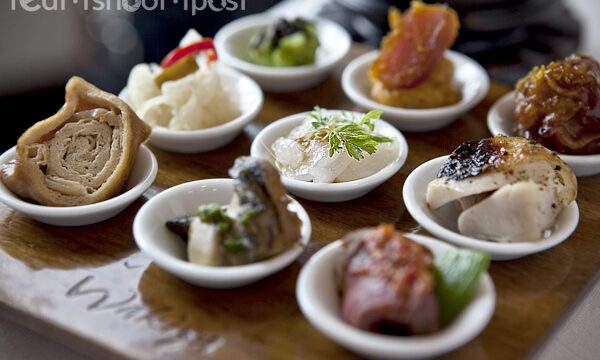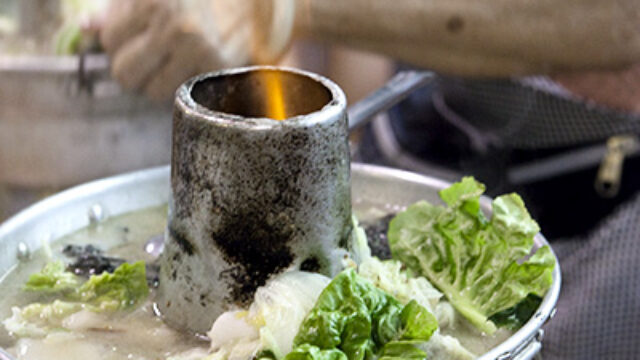Let’s face it. Sushi is expensive. At least good Sushi is. If you want to eat at a top end sushi bar in Singapore, you need to pay upwards of $100 if you want just the basic stuff. Of course at the other end of the spectrum you have conveyor belt sushi that serves up sushi for $1 a piece. But that too is expensive when you consider what you are getting. Compare a $2 plate of chicken rice to 2 mouthfuls of rice with 2 thin slices of Salmon and tell me whether conveyor belt sushi is expensive.
So why is Sushi so expensive? Well, if you want to eat good sushi, you need to have really fresh fish and nobody does it better than the Japanese. Take for example my order of Aji sushi. That sushi costs $8 a pop (a kg of Aji costs around $80) The fish is line caught in the waters of Japan, then killed and processed to exacting specifications. Many people would take a look at the fish and say, “Hey, wait a minute. I can buy Kembong from the fish market for less than $10 a kg and it looks exactly like that.” Well, I dare you to try slicing up a piece of Kembong and putting it in your mouth. The local fishermen catch Kembong using nets and when they haul the fish up onto the boats, they leave it on the decks to suffocate to death. The best Aji are caught by hand line and the fish is killed, bled on the spot and iced immediately so that the fish will undergo a slow rigor mortis. These conditions will mean that the fish will remain fresh as long as possible and you will appreciate it when you eat it raw.
Fish like Aji and Kembong (Horse Mackeral and Indian Mackeral respectively) tend to go bad very quickly. Firstly, they are very oily fish and their oils can turn rancid very fast if they are not processed properly. The Japanese get around this issue by processing the fish quickly. Locally we get around it by cooking with fish with lots of spices to mask the strong fishy odor.
The second reason fish taste fishy is because of a chemical called TMA or trimethylamine. Seawater is salty, so fish that live in the ocean require something in their bodies to prevent osmosis from drawing out water from the cells in their body. When you salt a piece of meat or fish, you notice that the salt draws out water from the meat right? If fish did not have something to counter the osmotic pressure, they would dehydrate while swimming in the ocean! The substance that balances out the osmotic pressure is TMAO or trimethylamine oxide. Once the fish dies, TMAO starts oxidising to TMA resulting in the fishy odor. The rate at which this occur will depend on how well the fish is processed.
You can gauge the quality of fish from any sushi bar by trying their Aji. If they are serving fresh Aji which is not cured with salt and vinegar, then it is a signal that they really do buy the top quality stuff from Japan. The Aji at Akashi Sushi is one of the best that I have come across. Each fish was beautifully plump and very firm and the taste wasn’t fishy at all. For a person like me who is averse to fishy fish, that really means something. 4.5/5
Now let’s talk about Hirame or Solefish. Solefish is a very tasty fish. That is why we Teochews love to use deep fried versions of it to flavour our soups and dumplings. However, in its raw form, the fish is quite tasteless. The Japanese enjoy it more for its texture than taste. The texture of Hirame tends to be rather chewy and the sweetness of the fish comes out gradually as you chew. It’s a bit like chewing on chewing gum once you have gotten it to the stable chewing stage. At that stage, you have to chew quite a bit in order to extract the subtle sweetness. Hirame is like that. Each solefish has got a dorsal and ventral fin which are responsible for quick movement of the fish along the seabed. The muscles that move these fins are located around the outer rim of the fish and are the most prized portions of the fish which the Japanese call Engawa. Chef Mervyn says that the Engawa is usually reserved for regular customers. So, if your itamae offers you a slice of Engawa, it is a sign that your status at the sushi bar has just gone up one rank. 4.25/5
Now, just imagine that you have just been called into your bosses’ office and he has pat you on the back and tell you that you have been voted the best employee of the year and that you will be receiving a half year bonus in your next pay check. Next imagine that you tried to get some of your friends to go out for lunch with you to celebrate, but being month end, most of them are too busy with the month end closing to go out for lunch. So, you decided, heck, since no one bothers, you might as well just use the money to pamper yourself to some really exotic sushi which you would never imagine ordering on an ordinary day. What would you order?
Well, in such circumstances, you might just want to consider the Akashi Special. This mega mouthful of sinful pleasure would set you back $35 bucks a pop, but it is guaranteed to send you to Omega 3 heaven. Two pops later and you can exhale and give yourself a pat on the back and tell yourself that you have done well to get that bonus. Sigh, it really is no fun to eat alone is it?
So what do you get for $35 bucks? Well, you get golf ball sized Sushi which is made from the ultra fatty part of the Otoro from a fresh bluefin tuna, topped with some Uni and finished with a slice of torched Otoro on top. You don’t really need me to tell you that it is good right? But at $35 a pop and with the issue of sustainability of bluefin tuna at hand, it really isn’t something I would encourage you to go all out to eat. But it is there and it is up to you to decide how you would strike a balance between the enjoyment of sushi and seafood sustainability. 4.5/5
Conclusion
The Sushi at Akashi Sushi isn’t cheap and you can expect to pay $180 if you want to eat a proper sushi course. However, you do get what you pay for as the seafood is top notch and imported directly from Japan for the Akashi group of restaurants.
Mention ieatishootipost when you order a Chef’s Chirashi Don and get a 10% discount and free fruit. Normal price $50++. Valid till 31 May 2011 at Akashi Orchard Parade Hotel as well as branches at Paragon and Vivocity.



